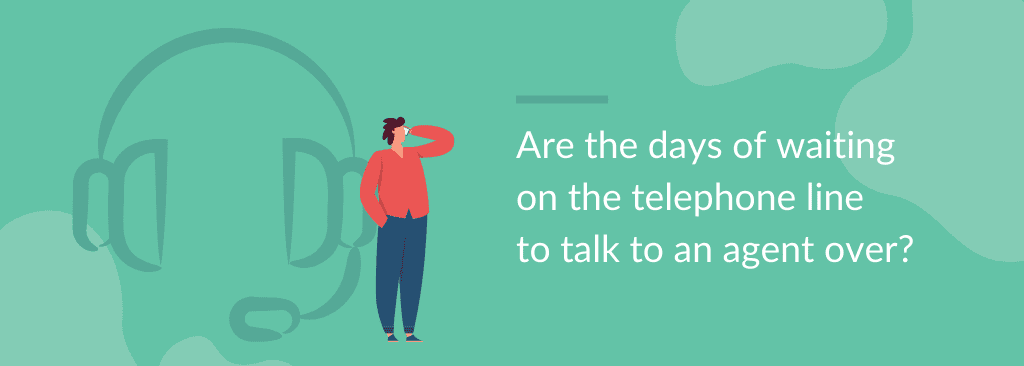Are the Days of Waiting on the Telephone Line to Talk to an Agent Over?
Have you ever felt exasperated by hanging endlessly on the telephone to speak to a human being at a call center?
I have had this feeling. There have been times when I had to wait anywhere between 40 minutes and 120 minutes to speak to an agent.
Are These Days Over?
I read an article a couple of days ago that stated that this anguish might probably get over.
Would you believe if a country comes up with a draft bill that requires customers to attend to customers within three minutes?
Spain just did that!
The Spanish government has approved a draft bill setting the three-minute limit and giving consumers the right to be heard by a person, not a chatbot, Consumer Rights Minister Alberto Garzon has said.
Garzon further added in the news conference, “The practically infinite waiting times that produce frustration are over.”
Companies must inform of incidents related to service supply on a free telephone line for 24 hours a day and 365 days a year and cannot refer customers to paid telephone lines.
Those failing to abide by the law would face fines between € 150 and € 10000 and up to € 100000 if the problem affects vulnerable customers or infractions occur.
Sooner than later, most countries would follow suit and insist on a response time SLA that organizations must adhere to.
What Does This Draft Bill Mean to the Customer Experience Industry?
In my mind, it is a blessing in disguise.
Overall, the popular narrative has been to replace human agents with bots and automate as much as possible. Some organizations work with a mission to automate 90 to 95% of their customer experience operations.
Fortunately or unfortunately, they still remain a mission.
While organizations setting out to automate the customer experience operations is a good initiative, you cannot completely ignore the human touch and the contribution of the agents.
What Does This Mean to the Customer Experience Function?
They will have to recruit additional hands to ensure that customer calls get answered within three minutes. They will route calls based on skills, time, and location by understanding the needs through easy-to-use IVR systems.
This would force organizations to optimize the usage of human agents across locations to address customers’ needs in the fastest possible times.
The upside is that organizations would look at self-service options and make them more accessible to customers. Organizations will also start to spend time training customers on how to use the self-service platforms.
Let me give you a scenario to explain this combination of self-service and the need to speak to the agents directly.
I have a problem with my coolant in the car, and I am sending it for servicing to the service station. The service people make the initial observations and provide me with a job card. Now, I can access everything else on the job card – a quotation, approvals, and delivery date with the number on the job card.
I see in the quotation that the head gasket in the engine has to be changed as it got worn off due to overheating of the engine as the fan wasn’t working correctly.
This is a high-cost line item, and I am not sure if I understood it correctly. So, I should be provided with an option to speak to the service people quickly. This should happen within the three-minute duration that we talked about at the beginning of this article.
While Spain has taken the initiative to ensure that customer calls get answered within three minutes, it is still at a nascent stage. It definitely is an excellent step in the right direction.
Some organizations have even better metrics when it comes to handling customer queries. For instance, CD Baby has only telephony as the way for its customers to reach them. Every call at CD Baby gets picked within the first three rings. How about that?
It is definitely in the interest of the organizations to comply with this 3-minute rule. After all, unhappy customers are a nasty business for any organization.
I am thrilled with this development, and I am eagerly looking forward to how this will change the customer experience in the coming days.
